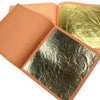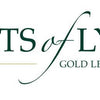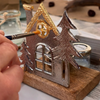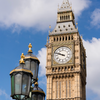Cyanotypes and 24-Carat Gold Leaf: Elevating Art with Wrights of Lymm
- by Sam Wozniak
Cyanotypes have captivated artists for over a century with their ethereal blue hues and versatile photographic techniques. When combined with 24-carat gold leaf, the result is a striking, almost otherworldly effect that transforms simple prints into monumental works of art. At Wrights of Lymm, we’re passionate about helping artists and restorers explore innovative ways to combine traditional techniques like gilding with modern experimental practices.
In this post, we’ll guide you through using cyanotypes with goldleaf applications, explore creative niches for your projects, and provide inspiration for restoration and gilding projects that are both professional and artistic.
Understanding Cyanotypes
Cyanotype is one of the oldest photographic printing processes, developed in the 19th century. It uses a simple chemical solution that reacts to UV light to create a vivid, Prussian-blue image.
The appeal of cyanotypes lies in their simplicity, versatility, and timeless aesthetic. Artists and craftspeople can use cyanotypes on paper, fabric, or other materials, creating unique effects with texture, layering, and transparency.
Key features of cyanotypes include:
-
Deep, rich blue tones that contrast beautifully with metallic accents.
-
Compatibility with multiple surfaces, from heavy art paper to textiles.
-
A non-toxic, relatively easy-to-learn process perfect for both beginners and advanced artists.
Why Combine Cyanotypes with 24-Carat Gold Leaf?
Adding 24-carat gold leaf to a cyanotype print elevates it from a traditional photographic piece to an eye-catching, monumental artwork. The combination works because:
-
Contrast and depth: The warm, reflective quality of goldleaf contrasts beautifully with the deep blues of cyanotype.
-
Luxurious aesthetics: Gold gilding adds a timeless, high-value finish reminiscent of historical restoration and classical art.
-
Tactile appeal: The layered textures of cyanotype and gold leaf invite viewers to experience the artwork both visually and physically.
Step-by-Step Guide to Using Gold Leaf on Cyanotypes
Creating a cyanotype with goldleaf requires careful planning and precision. Here’s a simplified workflow to achieve professional results:
-
Prepare Your Cyanotype
-
Coat your chosen substrate with cyanotype chemicals in low light.
-
Expose it to sunlight or UV light through your desired negative or stencil.
-
Rinse and allow the print to dry completely before applying gold leaf.
-
-
Plan Your Design for Gilding
-
Decide which areas of your cyanotype will receive gold leaf.
-
Use a stencil, freehand drawing, or screenprinting method for precise application.
-
For monumental pieces, consider geometric or abstract overlays to complement the cyanotype.
-
-
Apply Adhesive (Size)
-
Use a water-based or oil-based gilding adhesive, depending on your surface and the desired effect.
-
Let the size reach the correct tackiness—this is crucial for smooth, restoration-quality gilding.
-
-
Lay Down 24-Carat Gold Leaf
-
Gently press gold leaf sheets onto the tacky surface using a soft brush.
-
Avoid touching with bare hands to prevent oils from tarnishing the leaf.
-
Brush away excess gold leaf carefully to reveal the design.
-
-
Seal and Protect
-
Consider a transparent sealant to protect your work, especially if it will be displayed in high-traffic areas or exposed to light.
-
Screenprinting Gold Leaf for Precision Art
For artists looking for more control, screenprinting gold leaf over cyanotypes is a game-changer.
-
Create a screen with your desired pattern.
-
Apply adhesive through the screen onto the cyanotype print.
-
Lay down the gold leaf and gently remove the excess.
Screenprinting enables detailed, repeatable designs and is ideal for creating series of limited edition prints.
Creative Niche Ideas to Try
While combining cyanotypes with goldleaf is already unique, there are several niche artistic directions worth exploring:
-
Architectural Restoration Art
-
Use cyanotypes of historic buildings as a base.
-
Highlight key architectural elements with gilding, giving your prints a restoration-inspired look.
-
-
Botanical Cyanogilding
-
Press flowers or leaves to create organic patterns in your cyanotype.
-
Gild the veins or outlines with gold leaf for a luminous effect reminiscent of antique botanical illustrations.
-
-
Monumental Wall Art
-
Work on larger sheets to create monumental pieces.
-
Combine layered cyanotypes with bold gold leaf accents for gallery-ready artworks.
-
-
Mixed-Media Experiments
-
Combine cyanotypes, watercolors, or inks with gilding.
-
Experiment with textures and overlays to push the boundaries of conventional printmaking.
-
-
Personalized Gifts and Keepsakes
-
Cyanotype portraits with gold leaf accents make for exquisite, custom gifts.
-
Consider gilding initials, patterns, or symbolic motifs to add personal meaning.
-
Tips for Successful Cyanotype and Gold Leaf Projects
-
Test small: Always try your techniques on a small sample before committing to a larger piece.
-
Mind humidity: Humid environments can affect cyanotype development and gold leaf adhesion.
-
Layer thoughtfully: Consider the layering of blue, gold, and additional paints or inks for depth.
-
Preserve your work: Use archival-quality papers, UV-protective coatings, and careful handling to extend the life of your artwork.
The Intersection of Art and Restoration
Using gold leaf on cyanotypes is not just an artistic choice—it’s also inspired by centuries-old restoration practices. The same gilding techniques used in historic churches, frames, and monumental sculptures can be adapted to modern art prints, bringing a sense of heritage and craftsmanship to contemporary work.
At Wrights of Lymm, we encourage artists to see this as more than decoration. By combining cyanotypes with gilding, you’re participating in a lineage of artistry that spans the monumental to the personal.
Where to Start with Your Cyanotype and Gold Leaf Journey
Whether you’re a seasoned artist or a hobbyist, starting with cyanotypes and gold leaf requires patience, practice, and curiosity. Wrights of Lymm provides guidance, materials, and inspiration to help you achieve stunning results.
For those looking to dive deeper, explore these starting points:
-
Workshops and masterclasses: Learn hands-on techniques from experienced gilders.
-
Material sourcing: Ensure your gold leaf and cyanotype chemicals are of archival quality.
-
Experimentation: Mix cyanotypes with textured papers, fabrics, or unconventional substrates.
Conclusion
Combining cyanotypes with 24-carat gold leaf offers a unique opportunity to create artwork that is both timeless and contemporary. From restoration-inspired pieces to monumental wall art, the possibilities are endless. The key is thoughtful layering, precise gilding, and a willingness to experiment.
At Wrights of Lymm, we celebrate the marriage of tradition and innovation, helping artists, restorers, and creatives explore the beauty of cyanotypes with gilding. Let your imagination run free, and see how the deep blues of cyanotype meet the shimmering elegance of goldleaf to produce truly monumental art.






